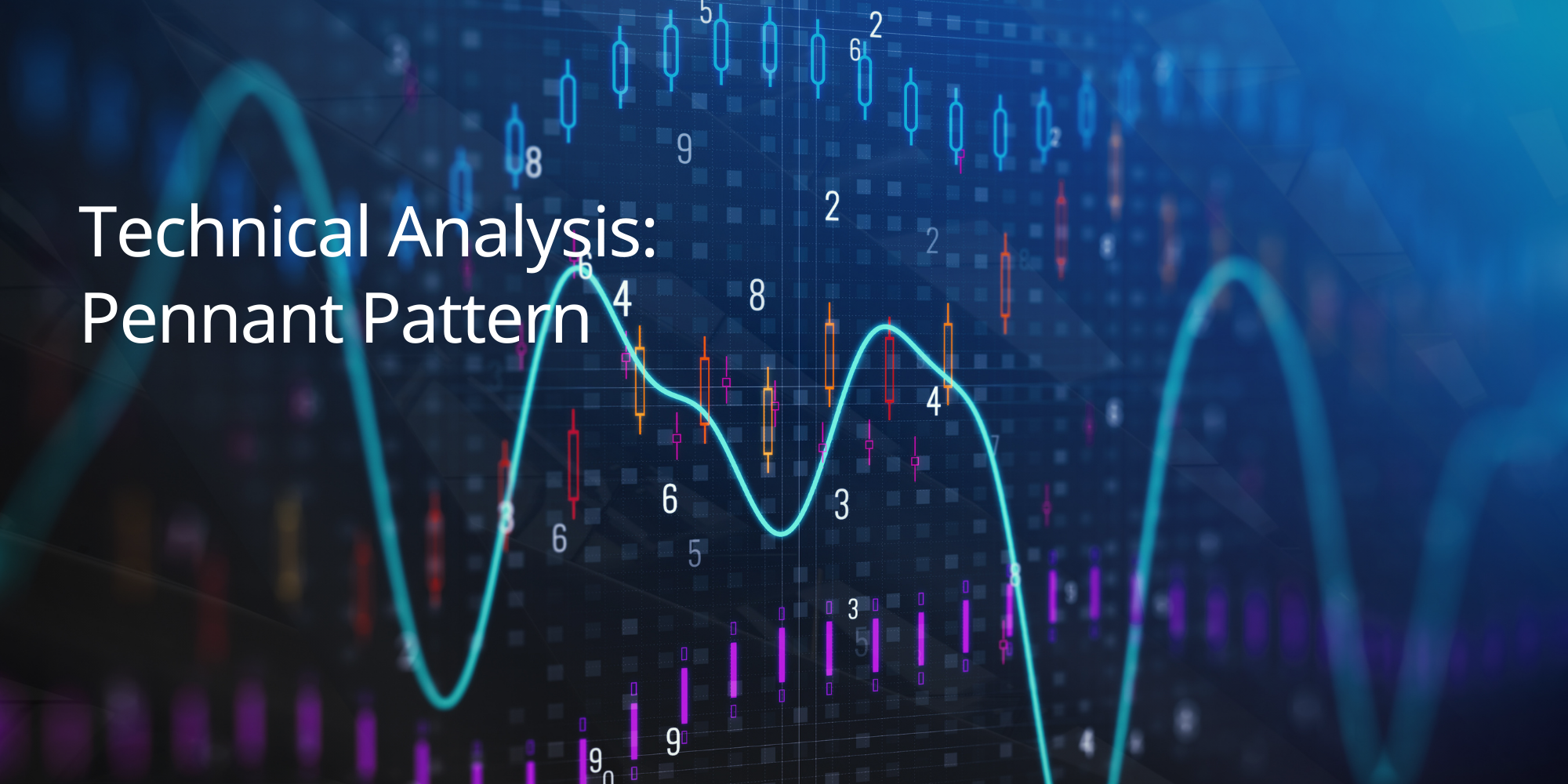Inverse Head and Shoulders Pattern: A Bullish Reversal Signal
The Inverse Head and Shoulders pattern is a well-known bullish reversal formation that signals a potential shift from a downtrend to an uptrend. Recognised by its distinctive three-trough shape, this pattern offers traders a visual clue that selling pressure may be subsiding and buyers are gaining control.
In this guide from TradeSmart, we’ll explore:
- The structure of the Inverse Head and Shoulders pattern
- How and when the pattern typically forms
- The role of the neckline and volume in confirmation
- How to trade the breakout and manage your risk
Whether you’re a beginner or an experienced trader, learning to identify this pattern can help you spot high-probability buying opportunities.
What is the Inverse Head and Shoulders Pattern?
The Inverse Head and Shoulders pattern is a bullish reversal pattern that typically forms after a downtrend. It’s characterized by three distinct troughs (low points), with the middle trough (the “head”) being the deepest and the two outer troughs (the “shoulders”) being shallower.
Key Characteristics:
- Three Troughs: The pattern consists of three troughs, forming a “head” and two “shoulders.”
- Neckline: A neckline is drawn by connecting the two peaks that form between the head and shoulders.
- Breakout: A breakout above the neckline confirms the pattern and signals a potential trend reversal to the upside.
- Volume: Volume typically increases on the breakout, confirming the strength of the reversal.
Trading with the Inverse Head and Shoulders Pattern
Traders often use the Inverse Head and Shoulders pattern to identify potential buying opportunities. A common strategy is to enter a long position after the price breaks above the neckline, with a stop-loss order placed below the neckline or the right shoulder.
How does an inverse head and shoulder pattern work?
The Inverse Head and Shoulders (H&S) pattern is a chart formation that signals a potential reversal of a downtrend. It suggests that selling pressure is weakening and buying pressure is starting to build.
Formation of the Pattern
The pattern typically forms in three phases:
- Downtrend: The pattern starts with an established downtrend, where the price is making lower lows and lower highs.
- Head and Shoulders Formation: The price then forms three distinct troughs:
- Left Shoulder: The first trough.
- Head: The middle trough, which is the deepest of the three.
- Right Shoulder: The third trough, which is similar in depth to the left shoulder. A “neckline” is drawn by connecting the two peaks that form between the head and shoulders.
- Breakout: The pattern is confirmed when the price breaks decisively above the neckline. This breakout signals a potential trend reversal to the upside.
Why the Inverse Head and Shoulders Pattern Works
The Inverse Head and Shoulders pattern suggests that the downtrend is losing momentum. The formation of the head and shoulders indicates that sellers are struggling to push the price lower, and the breakout above the neckline confirms that buyers are taking control.
Advantages and Limitations of the Inverse Head and Shoulders Pattern
The Inverse Head and Shoulders (H&S) pattern is a valuable tool for traders, but it’s important to understand both its strengths and weaknesses.
Advantages:
- Reliable Reversal Signal: The Inverse Head and Shoulders pattern is a generally reliable signal of a potential trend reversal from a downtrend to an uptrend. This can help traders anticipate significant shifts in the market and adjust their positions accordingly.
- Clear Price Target: The pattern provides a clear method for estimating a potential price target. By measuring the distance from the head to the neckline and projecting that distance upward from the breakout point, traders can set profit targets and manage their trades more effectively.
- Indicates Shift in Sentiment: The formation of the Inverse Head and Shoulders pattern often reflects a shift in market sentiment from bearish to bullish. This can be a valuable confirmation signal for traders who are looking for buying opportunities.
Limitations:
- False Breakouts: Not all breakouts from the neckline will result in a sustained uptrend. The price might break above the neckline and then quickly reverse back down, leading to a false breakout and potential losses for traders.
- Volatility: The Inverse Head and Shoulders pattern can be less reliable in highly volatile markets where prices can fluctuate erratically. This can make it difficult to accurately identify the pattern and interpret its signals.
Mitigating the Limitations:
To overcome these limitations, traders can:
- Combine with Other Indicators: Use the Inverse Head and Shoulders pattern in conjunction with other technical indicators, such as moving averages, trend lines, or momentum oscillators, to confirm signals and filter out false signals.
- Consider Market Context: Always interpret the pattern’s signals in the context of the overall market environment. Consider factors such as news events, economic data releases, and the broader market trend when making trading decisions.
- Practice Risk Management: Use appropriate risk management techniques, such as stop-loss orders and position sizing, to limit potential losses.
TradeSmart encourages traders to use the Inverse Head and Shoulders pattern as part of a comprehensive trading strategy. By understanding its limitations and combining it with other analytical tools, traders can make more informed decisions and improve their trading outcomes.
Choosing the Right Timeframe for the Inverse Head and Shoulders Pattern
The best timeframe for trading the Inverse Head and Shoulders pattern depends on your trading style and investment goals.
- Day Trading: If you’re a day trader looking to capitalize on short-term price movements, you might use intraday charts like 1-minute, 5-minute, or 15-minute charts to identify the pattern and potential entry and exit points.
- Swing Trading: If you’re a swing trader who holds positions for several days or weeks, hourly or daily charts might be more suitable for identifying the pattern and capturing larger price swings.
- Position Trading and Long-Term Investing: If you’re a position trader or long-term investor with a longer time horizon, daily, weekly, or even monthly charts can be used to identify the Inverse Head and Shoulders pattern and capitalize on larger trend reversals.
Key Considerations:
- Volatility: The volatility of the asset you’re trading can also influence your choice of timeframe. More volatile assets might require shorter timeframes to capture the rapid price movements.
- Personal Preference: Ultimately, the best timeframe for trading the Inverse Head and Shoulders pattern depends on your trading style and preferences. Experiment with different timeframes to find what works best for you.
Common Mistakes to Avoid When Trading the Inverse Head and Shoulders Pattern
The Inverse Head and Shoulders pattern can be a powerful tool for traders, but it’s important to be aware of some common pitfalls to avoid:
- Entering Too Early: Don’t enter a trade before the price breaks decisively above the neckline. A premature entry could result in a false signal and a losing trade if the price fails to break through the resistance.
- Ignoring Volume: Volume is an important confirmation signal for the Inverse Head and Shoulders pattern. Increasing volume on the breakout above the neckline confirms the strength of the reversal. Ignoring volume can lead to entering trades based on weak or false breakouts.
- Neglecting Risk Management: Always use appropriate risk management techniques when trading the Inverse Head and Shoulders pattern, such as stop-loss orders and position sizing. This will help protect your capital and limit potential losses if the trade moves against you.
- Not Considering Market Context: Interpret the Inverse Head and Shoulders pattern in the context of the overall market environment. Consider factors such as news events, economic data releases, and the broader market trend when making trading decisions.
- Misidentifying the Pattern: Not all formations that resemble the Inverse Head and Shoulders pattern are valid signals. Make sure the pattern meets the key characteristics, including the three distinct troughs and a clear neckline breakout.
Conclusion
The Inverse Head and Shoulders pattern is a reliable chart formation that can signal a major trend reversal. By understanding how to spot and confirm the pattern, traders can take advantage of potential uptrends early, while managing risk effectively.
TradeSmart gives you everything you need to trade this pattern with confidence:
- Learn to recognise key features like the shoulders, head, neckline, and breakout point
- Use our advanced platforms (MT4 and MT5) to analyse and act quickly
- Combine this pattern with volume analysis and indicators for stronger confirmation
- Build strategies to target profit zones and protect capital
Ready to trade trend reversals with confidence?
- Open a TradeSmart account and explore our cutting-edge tools
- Practice your strategy with a risk-free demo account
- Start live trading with just a $50 minimum deposit
Visit TradeSmart.com today and harness the power of the Inverse Head and Shoulders pattern in your trading strategy.





